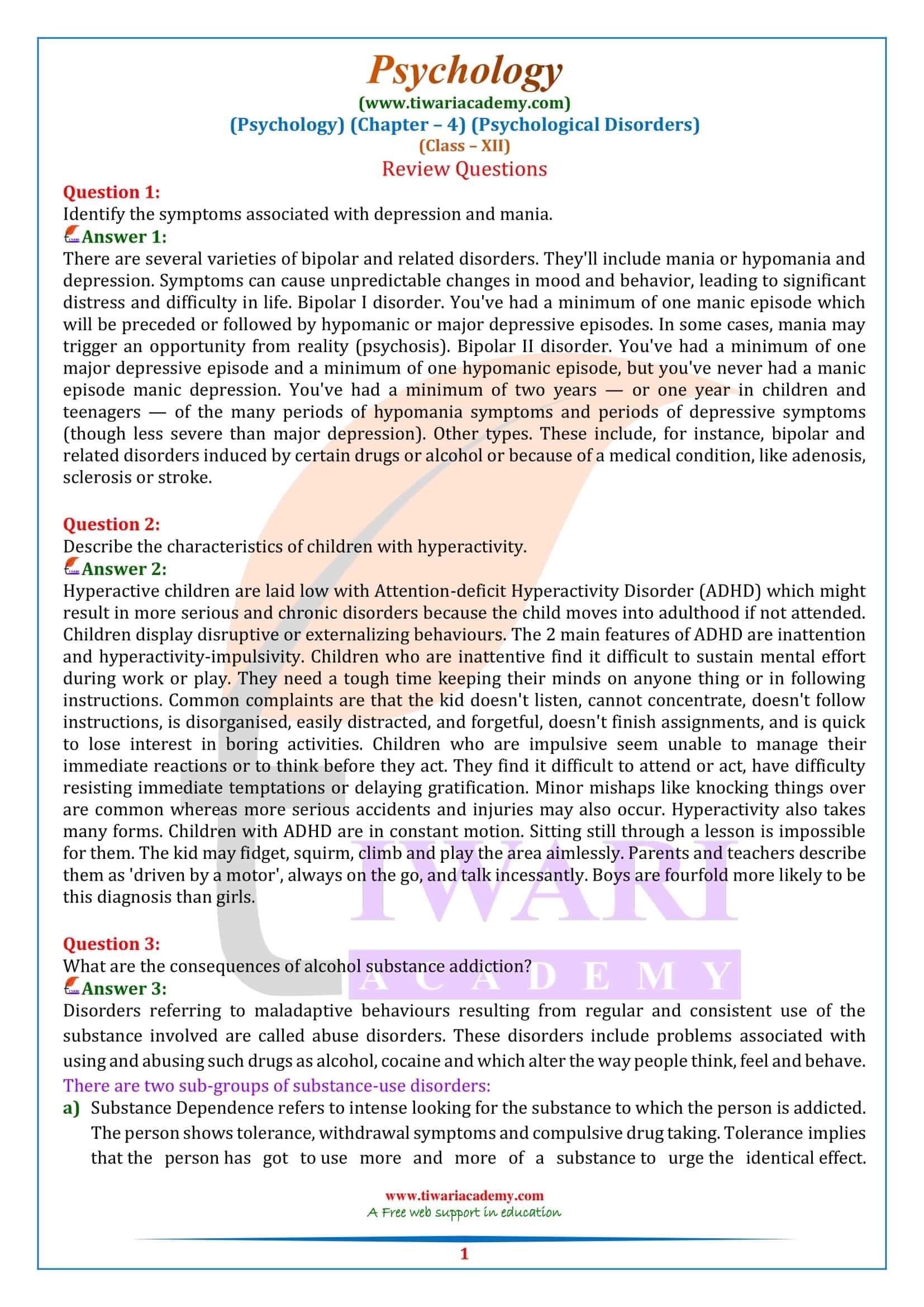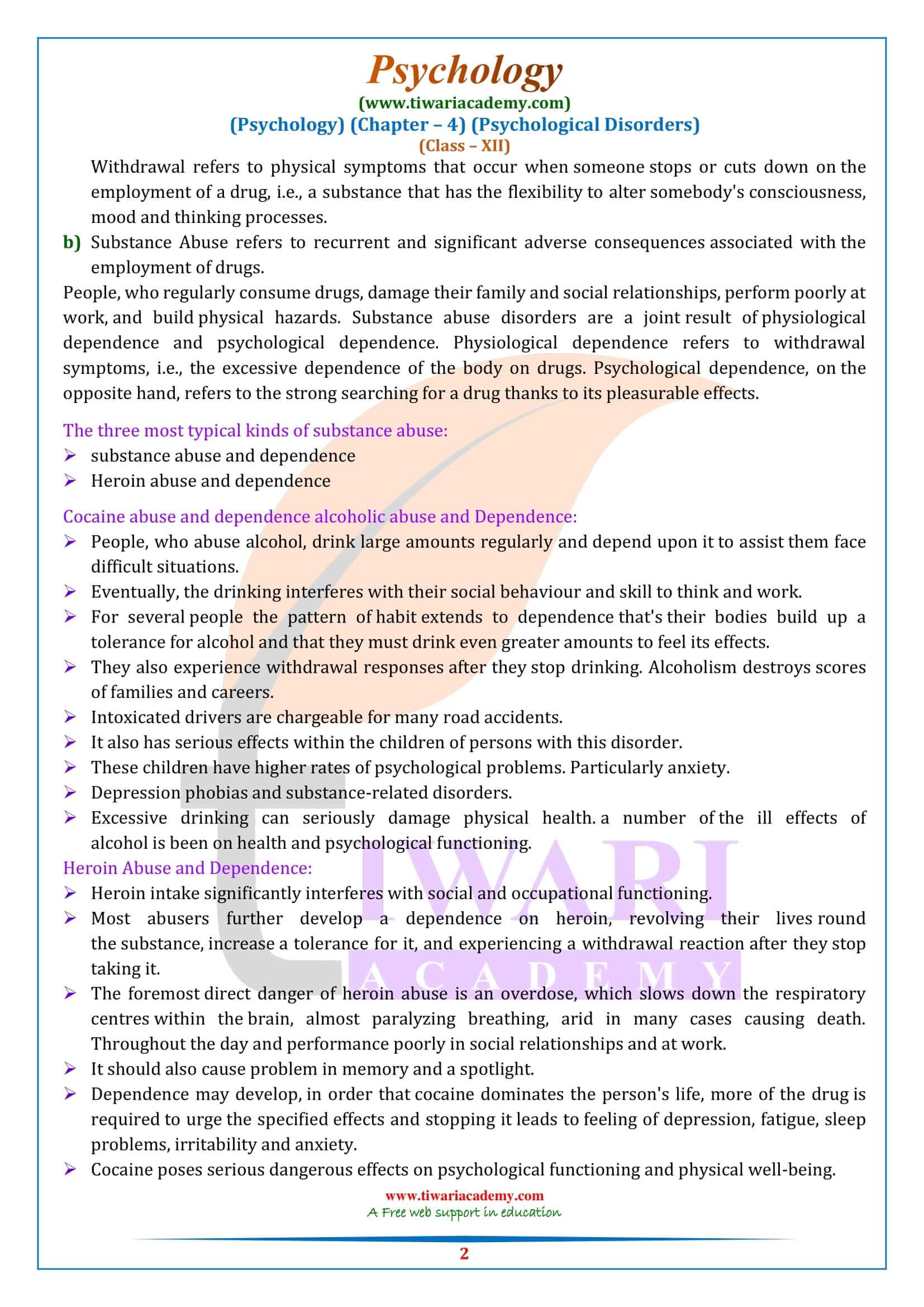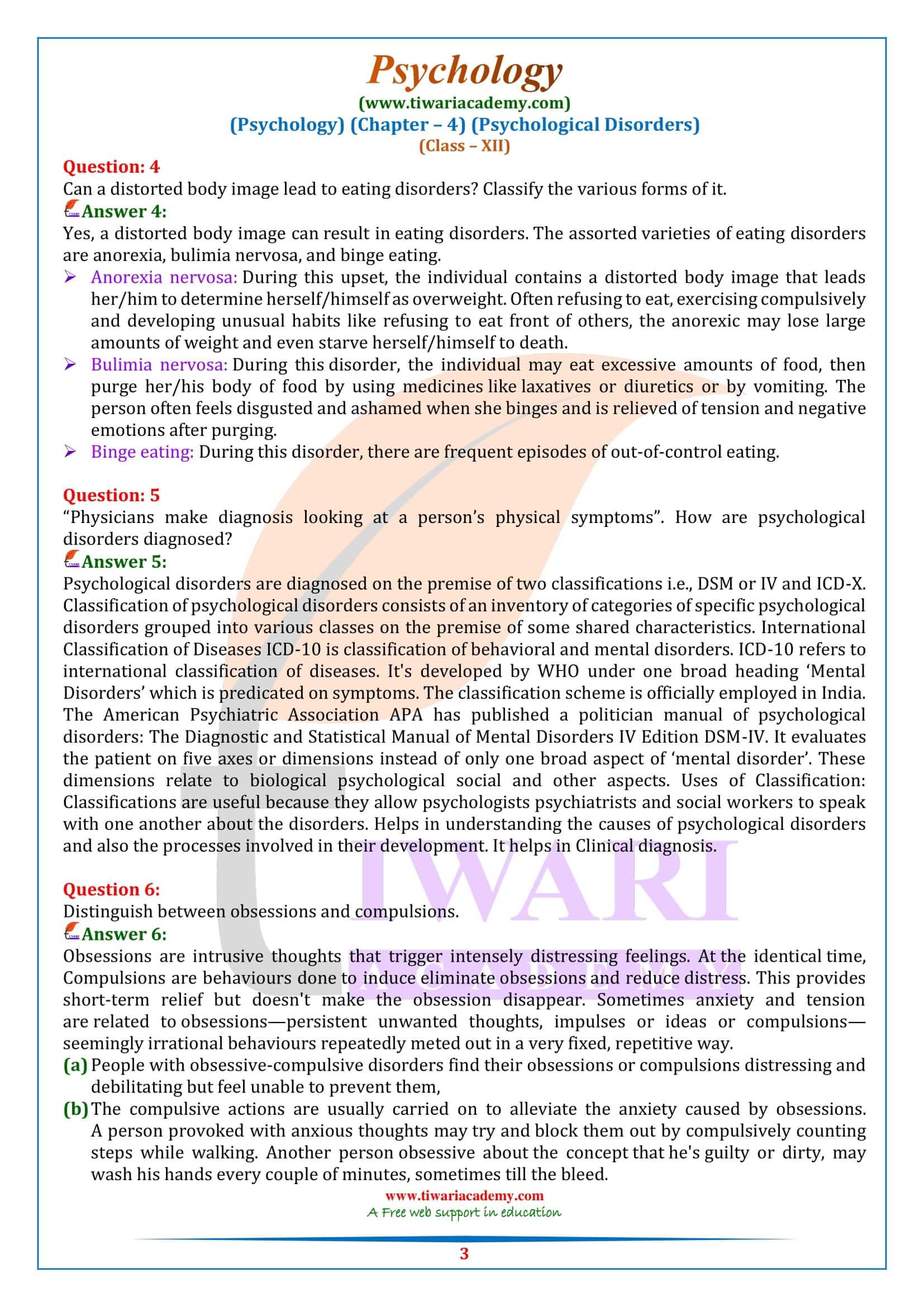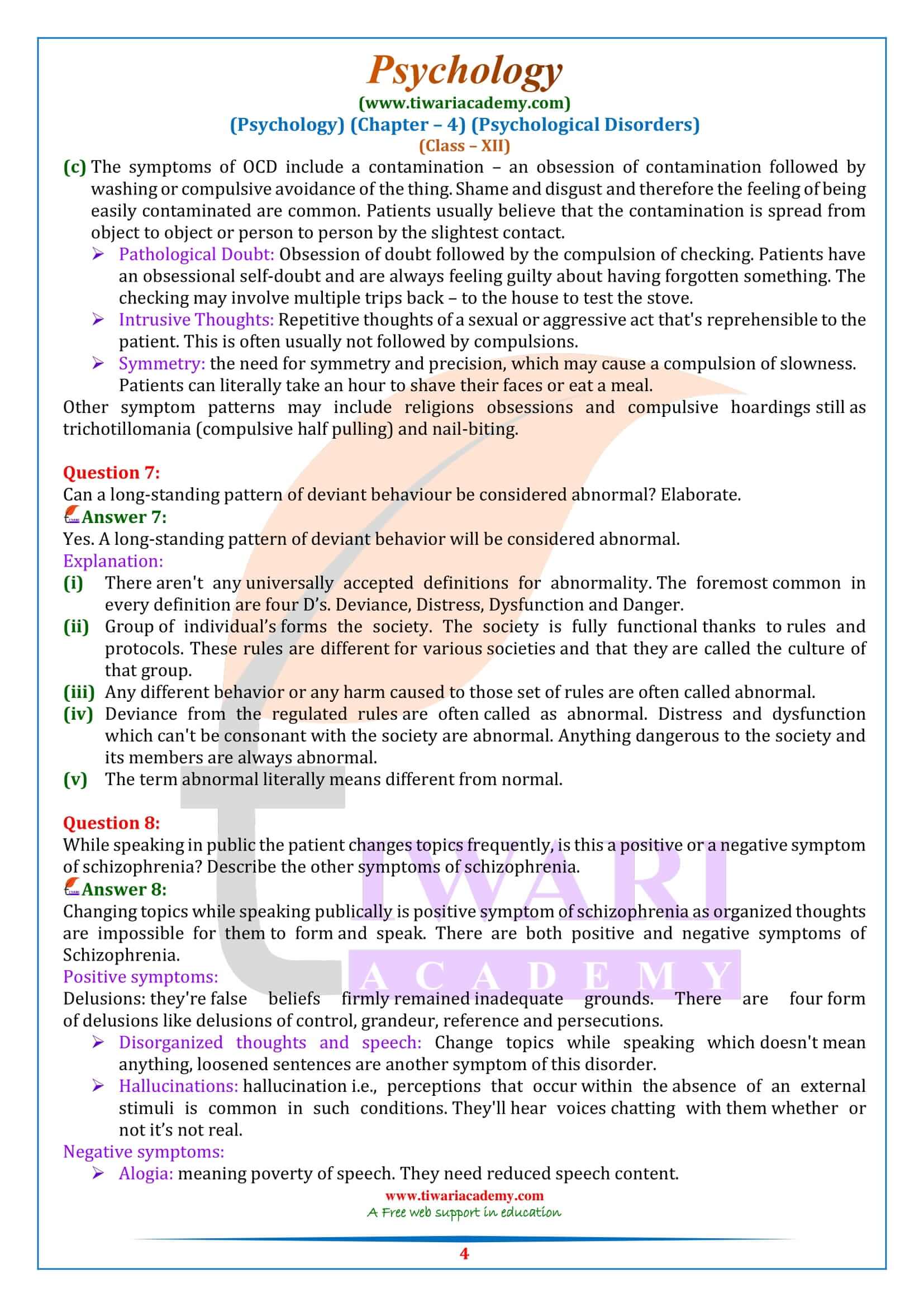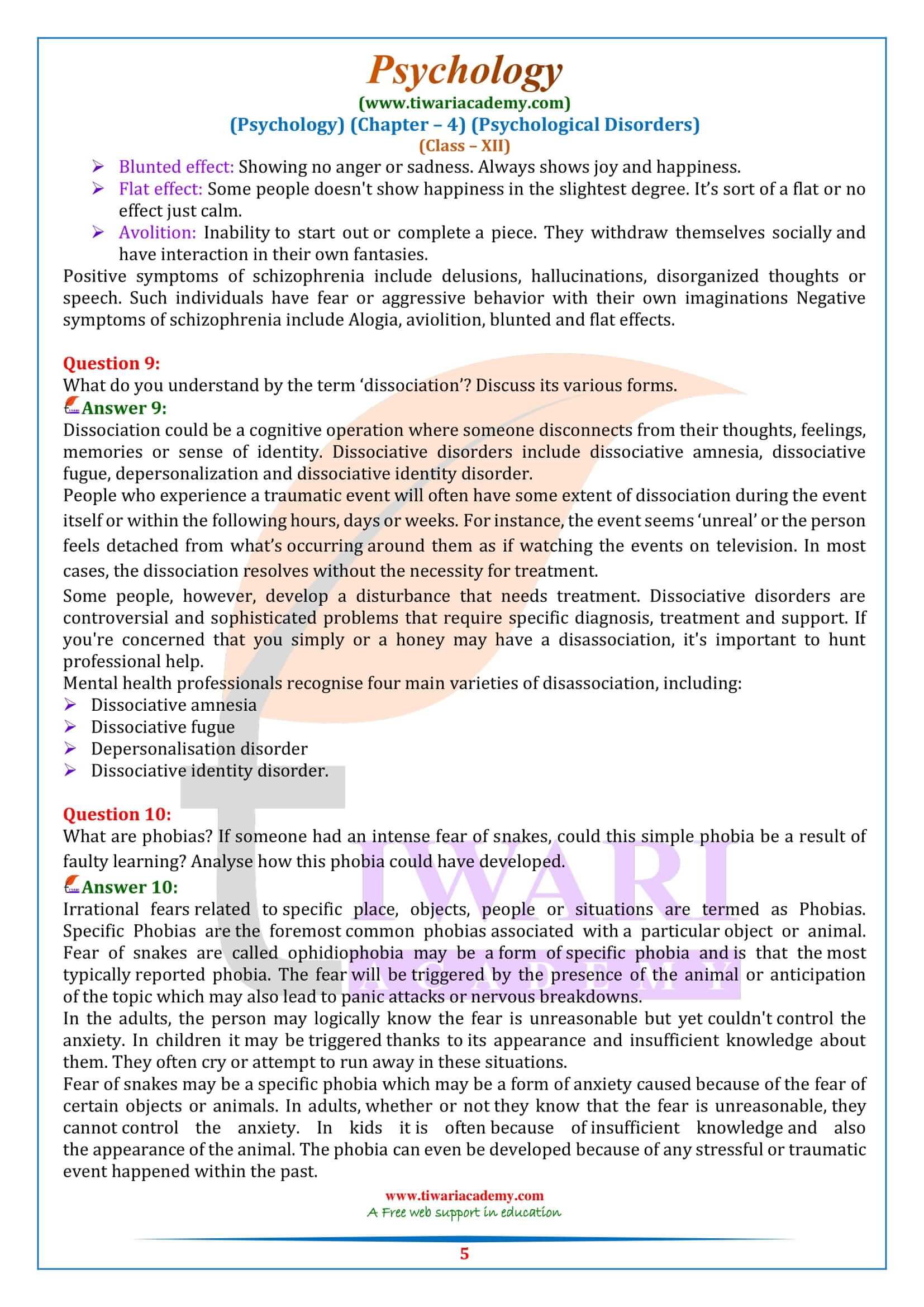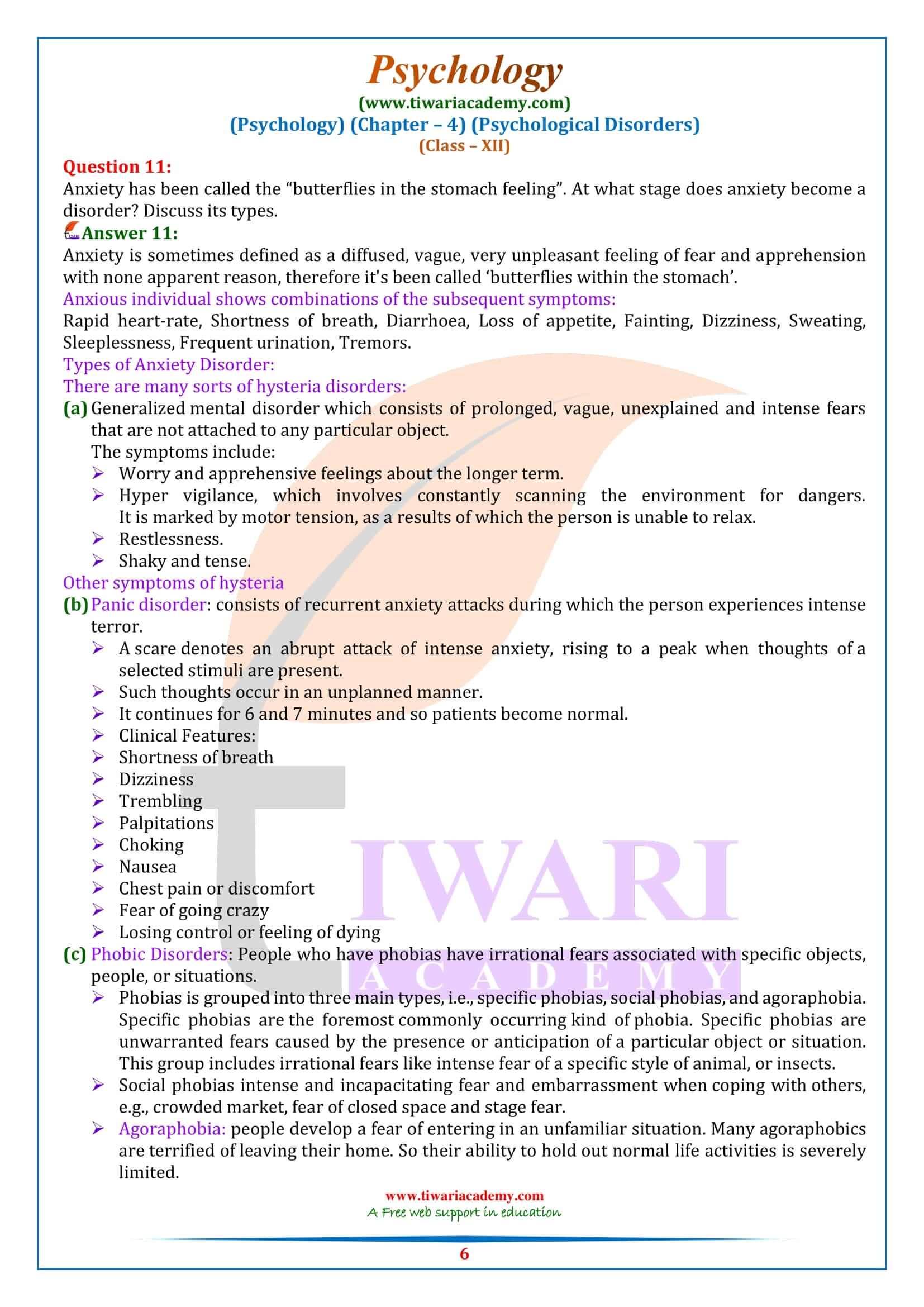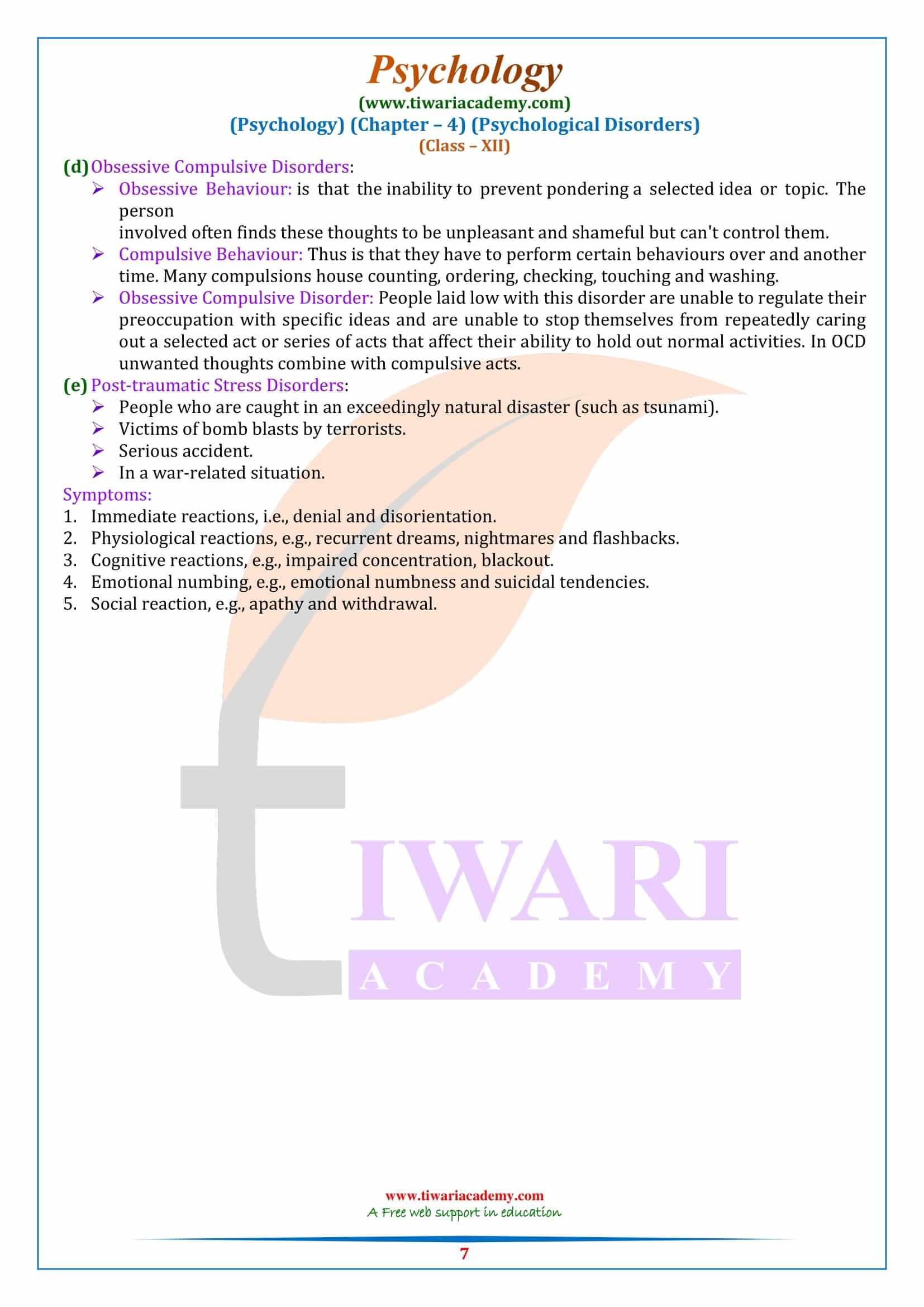NCERT Solutions for Class 12 Psychology Chapter 4 Psychological Disorders with extra and important questions answers updated for session 2024-25. Class 12 Psychology question answers and MCQ – multiple choice questions are helpful to prepare exams.
NCERT Solutions for Class 12 Psychology Chapter 4
Class 12 Psychology Chapter 4 Psychological Disorders Question Answers
Identify the symptoms associated with depression and mania.
There are several varieties of bipolar and related disorders. They’ll include mania or hypomania and depression. Symptoms can cause unpredictable changes in mood and behavior, leading to significant distress and difficulty in life. Bipolar I disorder. You’ve had a minimum of one manic episode which will be preceded or followed by hypomanic or major depressive episodes. In some cases, mania may trigger an opportunity from reality (psychosis).
Bipolar II disorder. You’ve had a minimum of one major depressive episode and a minimum of one hypomanic episode, but you’ve never had a manic episode manic depression. You’ve had a minimum of two years — or one year in children and teenagers — of the many periods of hypomania symptoms and periods of depressive symptoms (though less severe than major depression). Other types. These include, for instance, bipolar and related disorders induced by certain drugs or alcohol or because of a medical condition, like adenosis, sclerosis or stroke.
Describe the characteristics of children with hyperactivity.
Hyperactive children are laid low with Attention-deficit Hyperactivity Disorder (ADHD) which might result in more serious and chronic disorders because the child moves into adulthood if not attended. Children display disruptive or externalizing behaviours. The 2 main features of ADHD are inattention and hyperactivity-impulsivity. Children who are inattentive find it difficult to sustain mental effort during work or play.
They need a tough time keeping their minds on anyone thing or in following instructions. Common complaints are that the kid doesn’t listen, cannot concentrate, doesn’t follow instructions, is disorganised, easily distracted, and forgetful, doesn’t finish assignments, and is quick to lose interest in boring activities. Children who are impulsive seem unable to manage their immediate reactions or to think before they act. They find it difficult to attend or act, have difficulty resisting immediate temptations or delaying gratification.
Minor mishaps like knocking things over are common whereas more serious accidents and injuries may also occur. Hyperactivity also takes many forms. Children with ADHD are in constant motion. Sitting still through a lesson is impossible for them. The kid may fidget, squirm, climb and play the area aimlessly. Parents and teachers describe them as ‘driven by a motor’, always on the go, and talk incessantly. Boys are fourfold more likely to be this diagnosis than girls.
Can a distorted body image lead to eating disorders? Classify the various forms of it.
Yes, a distorted body image can result in eating disorders. The assorted varieties of eating disorders are anorexia, bulimia nervosa, and binge eating.
- Anorexia nervosa: During this upset, the individual contains a distorted body image that leads her/him to determine herself/himself as overweight. Often refusing to eat, exercising compulsively and developing unusual habits like refusing to eat front of others, the anorexic may lose large amounts of weight and even starve herself/himself to death.
- Bulimia nervosa: During this disorder, the individual may eat excessive amounts of food, then purge her/his body of food by using medicines like laxatives or diuretics or by vomiting. The person often feels disgusted and ashamed when she binges and is relieved of tension and negative emotions after purging.
- Binge eating: During this disorder, there are frequent episodes of out-of-control eating.
Physicians make diagnosis looking at a person’s physical symptoms. How are psychological disorders diagnosed?
Psychological disorders are diagnosed on the premise of two classifications i.e., DSM or IV and ICD-X. Classification of psychological disorders consists of an inventory of categories of specific psychological disorders grouped into various classes on the premise of some shared characteristics. International Classification of Diseases ICD-10 is classification of behavioral and mental disorders.
ICD-10 refers to international classification of diseases. It’s developed by WHO under one broad heading ‘Mental Disorders’ which is predicated on symptoms. The classification scheme is officially employed in India. The American Psychiatric Association APA has published a politician manual of psychological disorders: The Diagnostic and Statistical Manual of Mental Disorders IV Edition DSM-IV. It evaluates the patient on five axes or dimensions instead of only one broad aspect of ‘mental disorder’.
These dimensions relate to biological psychological social and other aspects. Uses of Classification: Classifications are useful because they allow psychologists psychiatrists and social workers to speak with one another about the disorders. Helps in understanding the causes of psychological disorders and also the processes involved in their development. It helps in Clinical diagnosis.
